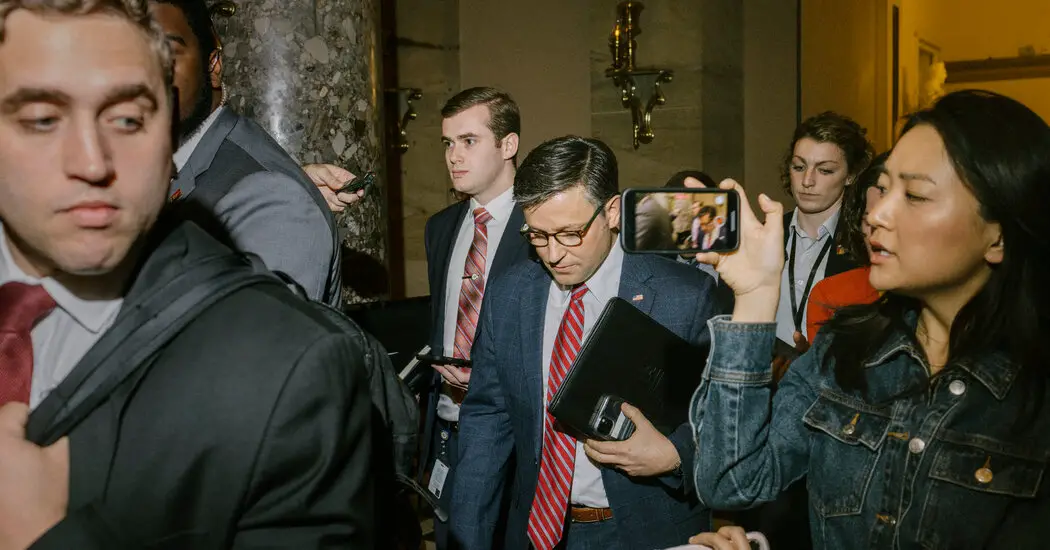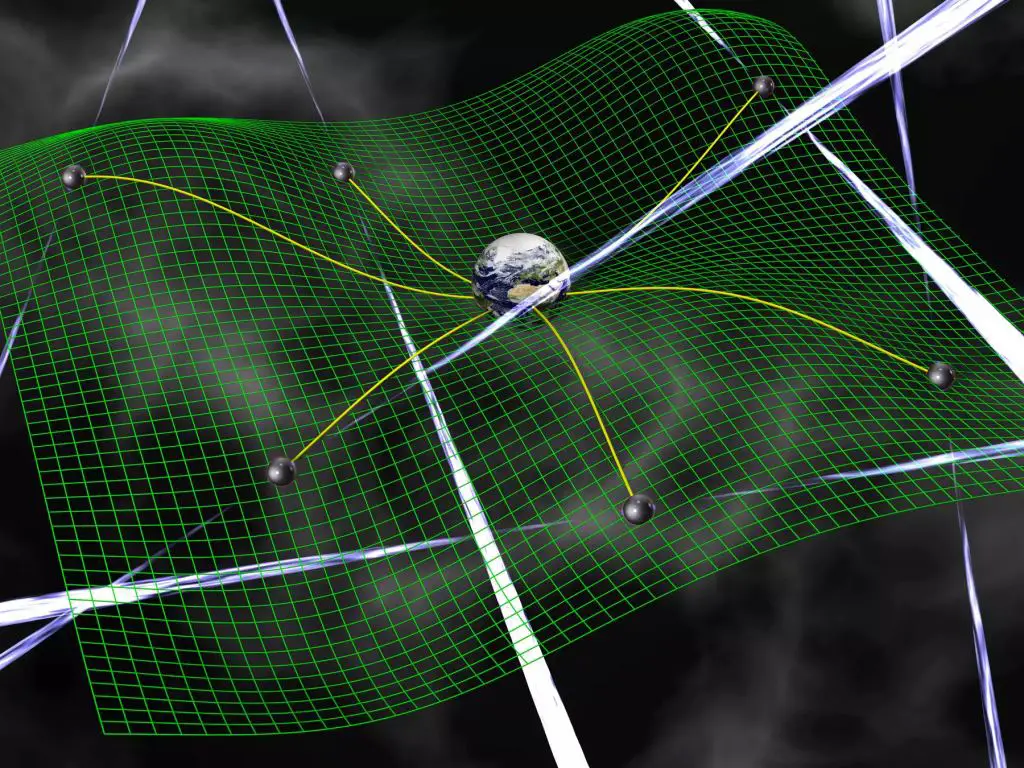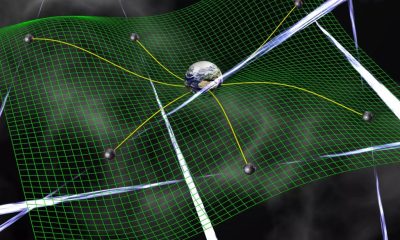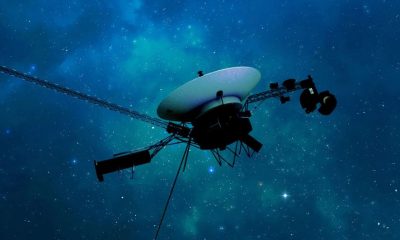News
House Approves 2-Year Extension of Surveillance Law Without Warrant Requirement

In a surprising turn of events, the House passed a two-year extension of a warrantless surveillance law that was set to expire, without the previously proposed warrant requirement. The legislation, known as Section 702 of the Foreign Intelligence Surveillance Act (FISA), had faced opposition earlier in the week, but was ultimately approved on Friday. This development came after former President Donald J. Trump had urged lawmakers to “kill” the bill, causing a dramatic shift in the political landscape.
The bill’s passage was a result of Speaker Mike Johnson’s efforts to rally support from hard-right Republicans who had initially blocked the measure. The final vote, with a split between both parties, reflected the contentious nature of the issue. Despite the narrow victory in the House, the legislation still needs to be approved by the Senate and signed by President Biden to become law.
The debate in the House centered around a proposed amendment to require warrants for searches of Americans’ messages collected under the program. While this amendment was narrowly defeated, it highlighted the widespread skepticism surrounding the surveillance law. Civil liberties advocates had pushed for the warrant requirement to protect individuals’ privacy rights, but national security officials argued that it would hinder their ability to gather crucial intelligence.
Despite the disappointment expressed by privacy advocates over the lack of a warrant requirement, the House did make some significant modifications to the bill. These changes included expanding the program’s scope to gather intelligence on foreign narcotics trafficking organizations and enhancing oversight mechanisms for congressional leaders.
The political drama surrounding the bill was fueled by Mr. Trump’s recent social media post urging lawmakers to “KILL FISA,” citing alleged misuse of the surveillance program. However, it’s important to note that the type of surveillance authorized under Section 702 is distinct from the FISA wiretapping used in the investigation of his campaign’s ties to Russia.
The bill’s reduction to a two-year extension was seen as a compromise to win over hard-line Republicans aligned with Mr. Trump, paving the way for its passage in the House. The Senate will now have to take up the legislation before the current authorization expires, though there is some flexibility due to existing court orders allowing the program to continue until 2025.
While the bill may not include the warrant requirement desired by privacy advocates, it does impose new restrictions on how the F.B.I. can search for Americans’ information obtained through the program. The bureau has faced criticism for past violations of these restrictions, but the bill aims to address those issues with tighter controls and reporting requirements.
Overall, the passage of the two-year extension of the surveillance law without a warrant requirement reflects the complex balancing act between national security concerns and individual privacy rights. The ongoing debate highlights the challenges of balancing security and civil liberties in an increasingly digital world.
Kayla Guo contributed reporting.
News
Further Support for Gravitational Wave Background in the Universe

The discovery of the gravitational wave background in 2016 marked a significant milestone in our understanding of the Universe. This groundbreaking discovery was further validated by the release of a second data set from the European Pulsar Timing Array, along with the addition of data from the Indian Pulsar Timing Array. These complementary studies have provided more evidence for the existence of the gravitational wave background, shedding light on the cosmic phenomena that shape our universe.
Gravitational waves are ripples in spacetime that are generated by violent processes such as merging black holes and colliding neutron stars. Predicted by Einstein in 1916 as part of his General Theory of Relativity, these waves have the ability to travel through space, largely unimpeded by any obstacles in their path. The first detection of gravitational waves in 2015 by the Laser Interferometer Gravitational-Wave Observatory (LIGO) confirmed their existence, originating from a gravitational merger between two black holes located 1.3 billion light years away.

The recent confirmation of the gravitational wave background by the European and Indian Pulsar Timing Arrays indicates that we are detecting a combined signal from the mergers of supermassive black holes. This random distribution of gravity waves that permeates the Universe offers a new avenue for studying the cosmos, akin to the Cosmic Background Radiation. The collaborative efforts of various observatories and research institutions have enabled us to delve deeper into the mysteries of the Universe.

Utilizing pulsar timing arrays as galaxy-sized detectors, researchers have been able to monitor and analyze the pulse arrival times of galactic pulsars on Earth. By detecting subtle patterns in these signals, they can uncover the presence of the gravitational wave background. The latest study led by J. Antoniadis from the Institute of Astrophysics in Greece delves into the implications of the low-frequency signals observed in the recent data releases from various pulsar timing array systems.
The accumulation of data from multiple sources has provided undeniable evidence for the existence of the gravitational wave background. With ongoing Pulsar Timing Array projects, the signals of the low-frequency gravity waves will become more distinct, offering a wealth of opportunities to explore the Universe in this novel way. The focus now shifts towards interpreting these signals to unlock the secrets of the cosmos.
-

 Entertainment1 week ago
Entertainment1 week agoOlivia Munn opens up about her decision to have a full hysterectomy during breast cancer fight: ‘It was the right choice for me’
-

 News1 week ago
News1 week agoUniversity of Wisconsin-Milwaukee and Protesters reach an agreement to dismantle encampment
-

 Entertainment2 days ago
Entertainment2 days agoSimone Biles Emerges Victorious over Suni Lee and Gabby Douglas at Gymnastics Classic
-

 News2 days ago
News2 days agoFacing Criticism for Shooting Dog, South Dakota Governor Noem Discusses ‘Difficult Choices’
-

 Business18 hours ago
Business18 hours agoWho are Crypto Market Makers and Market Takers?
-

 News19 hours ago
News19 hours agoFurther Support for Gravitational Wave Background in the Universe
-

 Entertainment19 hours ago
Entertainment19 hours agoCourteney Cox Reveals Late ‘Friends’ Co-Star Matthew Perry Continues to ‘Visit’ Her Even After His Passing










